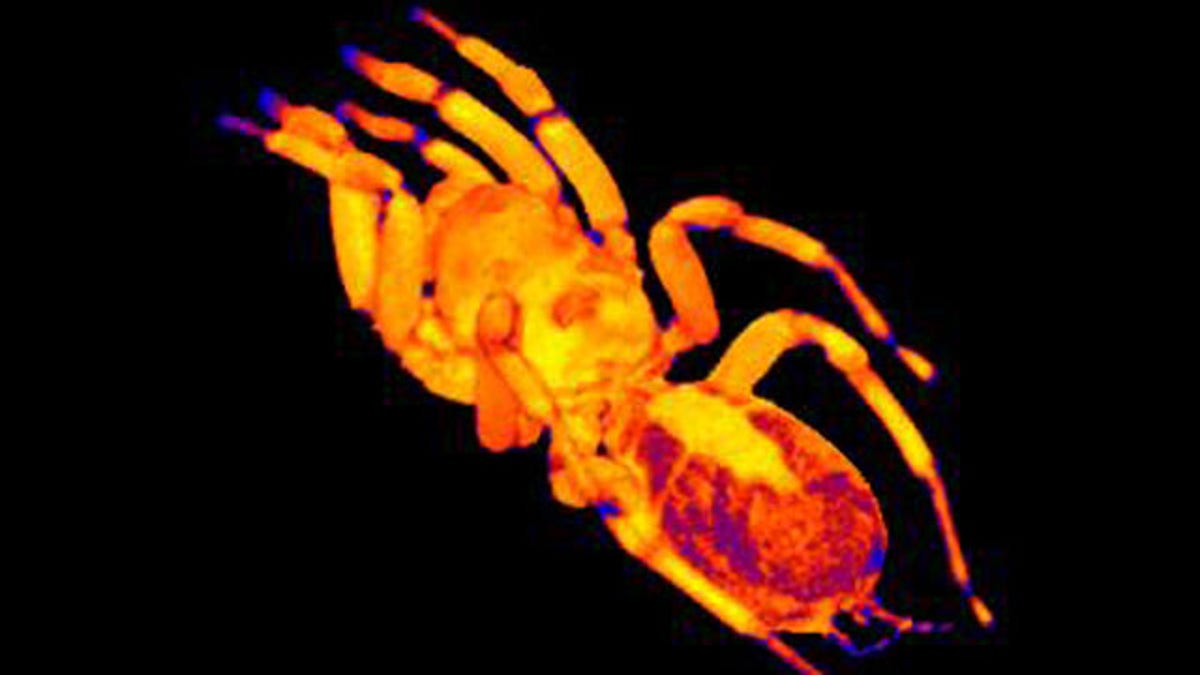
An MRI of a trantula suggests the heart -- seen is in the spider's abdomen, shown here as an elongated yellow region -- may have a peculiar "double beat." (Gavin Merrifield)
Can two hearts beat from one?
Researchers from Edinburgh University performed an MRI on a tarantula for the first time, producing never before seen images of the live spider's strange pulsing heart.
The researchers report that a new video they recorded with the medical device show blood moving through the heart -- and what appears to be a "double beating" of the organ.
"In the videos you can see the blood flowing through the heart and tantalizingly, it looks as though there might be "double beating" occurring, a distinct type of contraction which has never been considered before," said researcher Gavin Merrifield.
Merrifield presenting the research at the Society for Experimental Biology Annual Conference in Glasgow on July 1, 2011.
According to National Geographic, although tarantulas have a rather painful bite, their venom is actually weaker than the common bee's. Ranging from four to eleven inches in length, tarantulas periodically shed their external skeletons and even replace some internal organs, such as stomach lining and female genitalia, and re-grow lost appendages. They can be found in most tropical, subtropical and arid regions.
Though an MRI is usually conducted for medical reasons, scientists say that it has many other benefits in the research arena. It allows scientists to see inside animals non-invasively, and in this way gives them more accurate information concerning the biology of the creature being studied.
"On the more academic side of things, if we can link MRI brain scans with a spider's behavior, and combine this with similar data from vertebrates, we may clarify how intelligence evolved," Merrifield said.




















